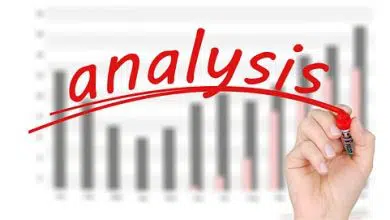Efficiency And Perfect Competition: In this writing, readers will be very familiar with elementary principles of economics relating to different types of marketing conditions in the economy and how do they come to equilibrium. In a perfectly competitive private market economy (which is rather hypothetical), the householders, otherwise called ‘consumers‘ and firms, otherwise called `producers‘ would be in large numbers and they take into account their individual welfare and decide their activities in the private competitive free market economy. In the second part, I will discuss on Pareto Efficiency.
The consumers will be guided by the utilities and satisfaction they derive in demanding and consuming the goods; while the producers (Firms) will be guided by the profits and losses in their ventures. In such a perfectly Competitive market, no buyer or seller can affect the market price by changing the individual demand or supply in the market.
In short, every operator in the market, whether consumer or supplier is only a price-taker and not price-maker. The general equilibrium price in such a market is determined by impersonal forces of market supply and demand. We assume that the level of technology, tastes, preferences and other factors remain constant without affecting the state of general equilibrium.
This is depicted-in the figure 4.1 Fig. 4.1 Industry and Firm: Equilibrium in Perfect Competition.

The left of the Figure 4.1 indicates the equilibrium of the perfectly competitive market arrived by the interaction of aggregate demand and aggregate supply. The price OP has been taken by the firm on the right side. The firm’s demand curve is the straight horizontal line at P.
At the price OP, the firm can produce and sell any quantity. But, how much the firm will sell? This depends on its marginal cost curve which cuts the price or revenue curve at E. If the firm decides to produce more than Ob units, it will incur loss, as MC is higher than the marginal revenue it gets for each unit sold. If it sells less than Ob units, it will reap profit. But maximization of profit comes at the level Ob where MC is equal to MR.
In a perfectly competitive market, a firm will maximize its profit at a level of output where P = MC. Every firm will produce where P = MC. Here, the sellers group gets maximum benefit by making P = MC. The total market supply is equal to total market demand and in this sense all consumers are satisfied, as they get the quantity what they demand.
What is Efficiency ?
What is the meaning of the term ‘efficiency‘ for the whole society in this context? An individual is said to be efficient when the person maximizes the consumption with the available resources or income.
To put it in the other way, an individual is said to be efficient, if the person makes minimum expenditure to attain a particular level of consumption. In the same way, a firm is said to be efficient, if it produces maximum output with available resources or investment; or minimum investment or expenditure to achieve a particular level of output.
To put it shortly, efficiency connotes maximum output with very minimum resources or maximum consumption with minimum income. In the same manner, we can say that an economy is said to be very efficient if it can maximize the satisfaction of the society with minimum resources; assuming that we can make some aggregation of satisfaction of all households in the economy. This aggregation of satisfaction is not in any way physical measurement like tons or meters, but by subjective values attributed to different goods and services by individual consumer units.
This maximization of satisfaction for the entire society as a whole is termed maximum social welfare with minimum social cost. This can also he expressed in a different way. Economic efficiency of a society is identical with maximum social welfare which means that it would not be possible to make any change in the economy’s consumption or production arrangements, without reducing the welfare of any other household.
Maximum social welfare is a situation in the society where it would be
impossible, even conceptually to make any readjustments of production and consumption arrangements to make even one household better off without making some other household worse off. As long as such a “cost-less” readjustment can be effected in a society, it has not attained a state of Maximum Social Welfare (MXSW), and this is exactly what is called Pareto’s Optimum.
Definition and Meaning of Pareto Efficiency
“Pareto efficiency is defined as a situation in which every one is so well off that it is impossible to make anybody better off without simultaneously making at least one person worse off. “ It is a situation in which all possibilities for voluntary trades which would reallocate resources or redistribute commodities more efficiently, have been exhausted. The term is named after Italian economist, Vilfreo Pareto.
There are no more opportunities to improve the efficiency of the economic system. In a sense, Pareto efficiency is a situation so efficient that it is impossible to reallocate resources or redistribute commodities in order to make things more efficient. Once Pareto efficiency has been attained, all gains to individuals must come at the expense of other individuals.
The next step in our discussion is to show that perfectly competitive market economy with general equilibrium price discussed already, satisfies the necessary condition for maximizing social welfare. We shall limit our discussion only to P = MC result indicated in the perfectly competitive market system with the relationship of MXSW.
The society attains maximum social welfare (MXSW) when the society produces at that level of output where P = MC. How is this so? What is the relationship between MXSW and P = MC. According to our analysis all profit maximizing firms will produce at the level of output in which the cost of last unit produced (Marginal Cost or MC) will be just equal to the prevailing market price of its output. Suppose for illustration, MC is not equal to price for some reason or other and it is greater than price (MC> P).
This means that the cost of the last unit of the commodity produced is greater than the market price of the last unit offered for sale. Evidently, the producer has to use more productive input of greater value than the price paid by the household. This means that the subjective value of the last unit consumed by household is less than the value of input. This in essence reveals that the economy is producing more than what is actually required to the households.
This suggests that the production can be reduced and thereby productive input resources could be released for using the same for more socially valuable commodity. This type of cost-benefit tests determine the optimum levels of production in the economy. Further, M such a situation where MC ≠ P the profit maximization behavior of the firm will be upset.
Thus we come to the conclusion that MC = P is a necessary condition for MXSW in a perfectly competitive system, and the market becomes more efficient with allocation of resources.
Example of Pareto Efficiency:
For example there is only one product in a country which is liked by everyone. If this condition prevails, then every allocation there is Pareto efficient. The only way to make someone better off is to give him more of the product, in that case someone else will have less of the product, and hence be worse off. Pareto efficiency is said to occur when it is impossible to make someone better off without making someone worse off.
Importance of Pareto Efficiency:
Pareto efficiency is important because it provides a weak but widely accepted standard for comparing economic outcomes. This is related to the concept of productive efficiency.
Maximum Social Welfare and Perfect Competition (Analysis with Indifference Curves)




